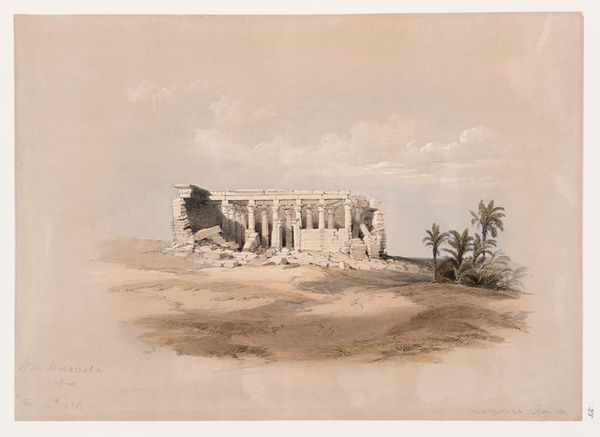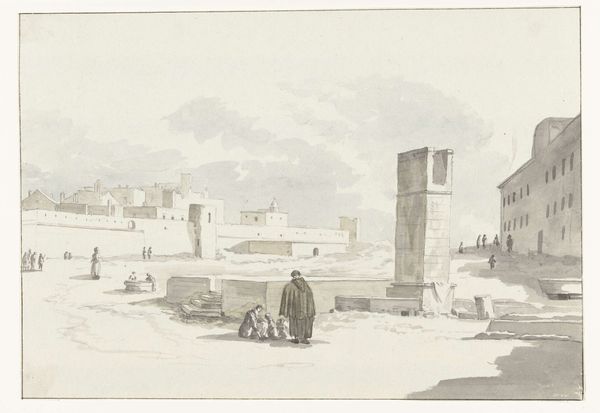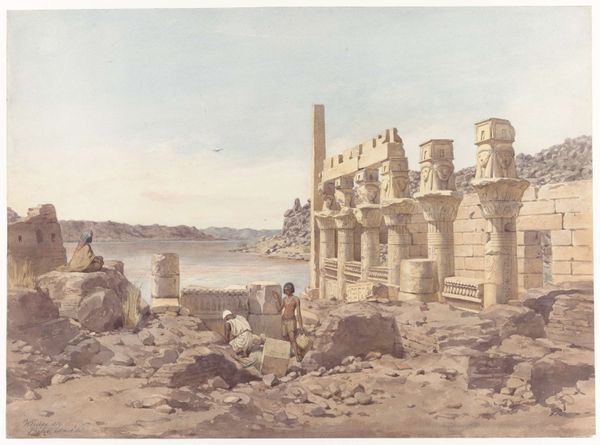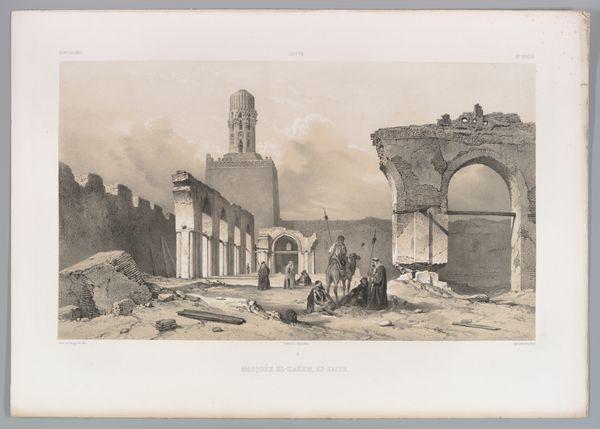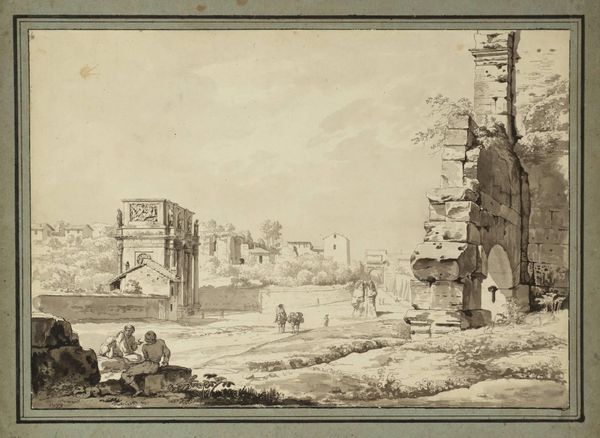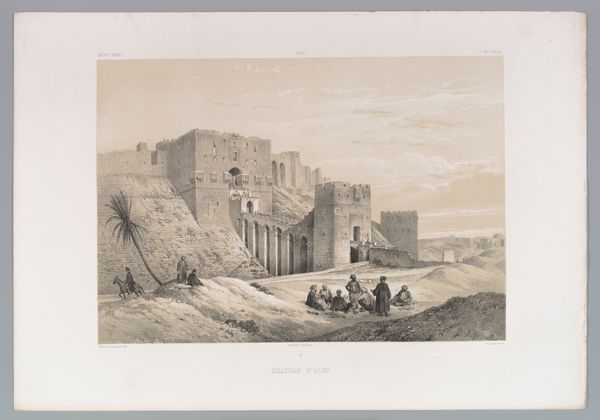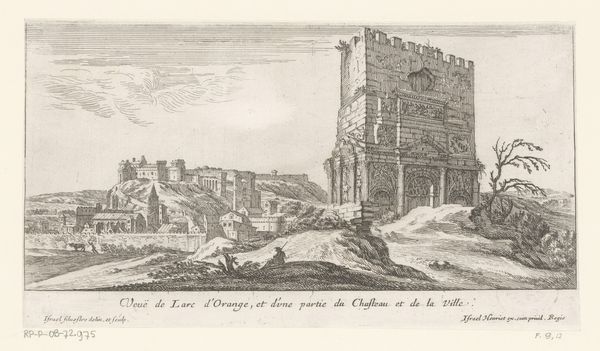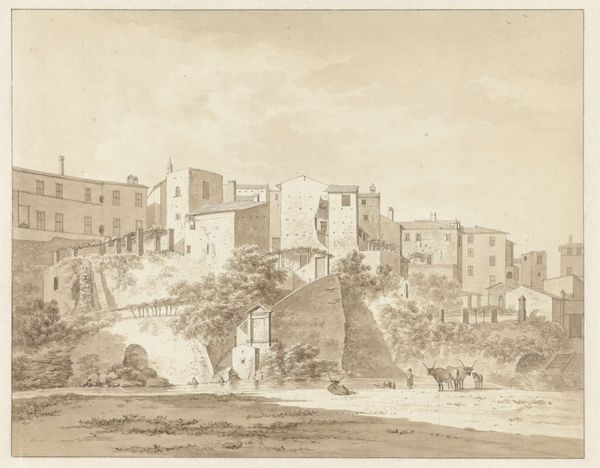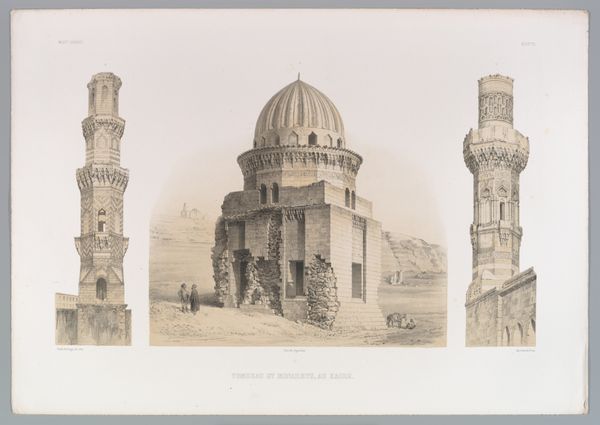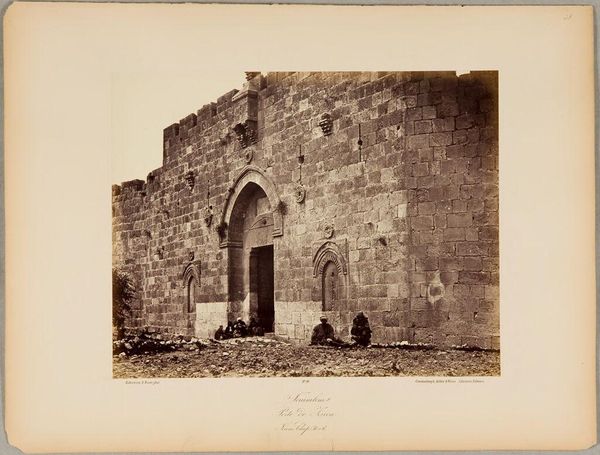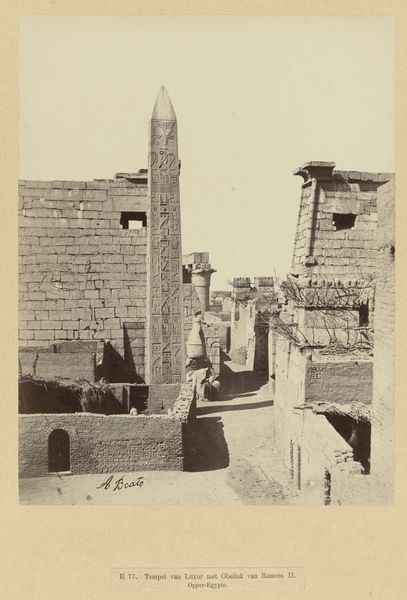![Gate of Victory [Bab an-Nasr], and Mosque of El Hakim. by David Roberts](/_next/image?url=https%3A%2F%2Fd2w8kbdekdi1gv.cloudfront.net%2FeyJidWNrZXQiOiAiYXJ0ZXJhLWltYWdlcy1idWNrZXQiLCAia2V5IjogImFydHdvcmtzL2RiYzhkZWQ2LWQ3ZTgtNGZhMi1hOGUwLTUxNmZiOGM0MjkyMS9kYmM4ZGVkNi1kN2U4LTRmYTItYThlMC01MTZmYjhjNDI5MjFfZnVsbC5qcGciLCAiZWRpdHMiOiB7InJlc2l6ZSI6IHsid2lkdGgiOiAxOTIwLCAiaGVpZ2h0IjogMTkyMCwgImZpdCI6ICJpbnNpZGUifX19&w=1920&q=75)
painting, watercolor
#
painting
#
landscape
#
watercolor
#
romanticism
#
orientalism
#
cityscape
#
watercolour illustration
#
watercolor
Copyright: Public Domain: Artvee
Curator: Immediately, the weight of history seems to press down on this watercolor. Editor: Precisely! David Roberts, the artist, created this evocative image, "Gate of Victory [Bab an-Nasr], and Mosque of El Hakim," sometime between 1846 and 1849. It's a view rendered in watercolor, blending landscape and cityscape. Curator: That title—"Gate of Victory"—it has a proud ring to it, but what strikes me is the muted palette. Those greys and browns lend a sense of solemnity, almost melancholic grandeur, despite the suggested "victory." The walls and minaret feel immense and enduring. Editor: Yes, the iconography here is rich. The gate, of course, acts as a threshold, not just physically but symbolically. The architecture speaks of power, authority, and perhaps even a specific cultural narrative of triumph that the Ottomans tried to inscribe through these landmarks in Cairo, doesn't it? But I think it’s been received differently depending on shifting politics in the area, and by contemporary European eyes. Curator: Interesting point. Orientalist painters often deployed certain visual shorthands. Note how Roberts positions the locals and the camels in the foreground. They become part of the exotic backdrop. Is he genuinely capturing daily life, or staging a scene to satisfy a European appetite for the 'authentic' Orient? What specific image are we, in the west, really trying to promote? Editor: Absolutely, the cultural lens is undeniable. However, I also see the artist grappling with timeless motifs: faith, power, and the passage of time. These enduring themes resonate even when filtered through a particular cultural perspective. The Gate itself becomes a symbol of resistance and continuity for Cairenes. Curator: I agree that Robert captures enduring motifs, but I believe a closer look at his place in art history should compel us to scrutinize that perspective and consider whose narratives take centre stage in artistic representations of foreign culture, regardless of whether it's in service to faith or the 'truth' of time. Editor: A worthwhile point. Ultimately, isn't the value of such works found not just in their artistic merit, but in the complex cultural dialogues they provoke? Curator: Yes, provoking deeper questions, the real victory comes in the asking, isn't it?
Comments
No comments
Be the first to comment and join the conversation on the ultimate creative platform.
